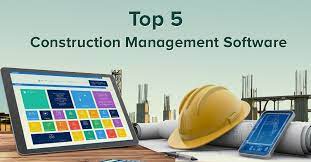
As modern technology continues to advance, the panorama of construction software evolves, ushering in new tendencies and innovations that redefine how tasks are conceptualized, executed, and handled. Here are a few important styles shaping the future of construction software:
Integration of Artificial Intelligence (AI) and Unit Learning (ML):
AI and ML algorithms are increasingly being integrated into construction software to speed up repeating activities, enhance source of information allocation, and give data-powered information for selection-producing. Examples include:
Predictive statistics for timetable and spending budget forecasting.
AI-operated danger analysis and mitigation methods.
Machine studying algorithms for perfecting developing models based on overall performance data.
Adoption of Augmented Fact (AR) and Online Fact (VR):
AR and VR technology are changing the way construction assignments are visualized, planned, and performed, providing immersive experiences and enhanced spatial knowing. Programs include:
VR-dependent virtual walkthroughs for design validation.
AR overlays for on-site construction assistance and top quality management.
Far off collaboration using AR-enhanced video clip conferencing resources.
Embrace of Internet of Stuff (IoT) and Detector Technological innovation:
IoT units and detectors inserted within construction web sites and creating elements allow genuine-time keeping track of of various factors, enhancing protection, productivity, and sustainability. These include:
IoT-enabled devices monitoring for supply management.
Environmental sensors for checking air quality and temperature.
Intelligent constructing techniques for power management and predictive servicing.
Expansion of Cloud-Structured Remedies:
Cloud-structured construction software will continue to obtain traction, supplying scalability, mobility, and accessibility advantages over traditional on-properties solutions. Important positive aspects include:
Central information storage and convenience from anyplace, any time.
Effortless cooperation among spread project crews.
Automated software up-dates and upkeep, lowering IT overhead.
Give attention to Sustainability and Natural Building Practices:
Construction software is increasingly integrating characteristics to assist lasting building methods, for example electricity modeling, lifecycle evaluation, and materials locating optimizing. Key functionalities involve:
Carbon dioxide footprint evaluation and lessening methods.
Incorporation with green developing qualification plans.
Supply sequence transparency for sustainable finding of supplies.
To conclude, the way forward for construction software is marked by development, pushed by growing technology and growing business calls for. By adopting these styles and using the effectiveness of advanced electronic instruments, construction businesses can understand obstacles and grab prospects in an ever-shifting panorama.